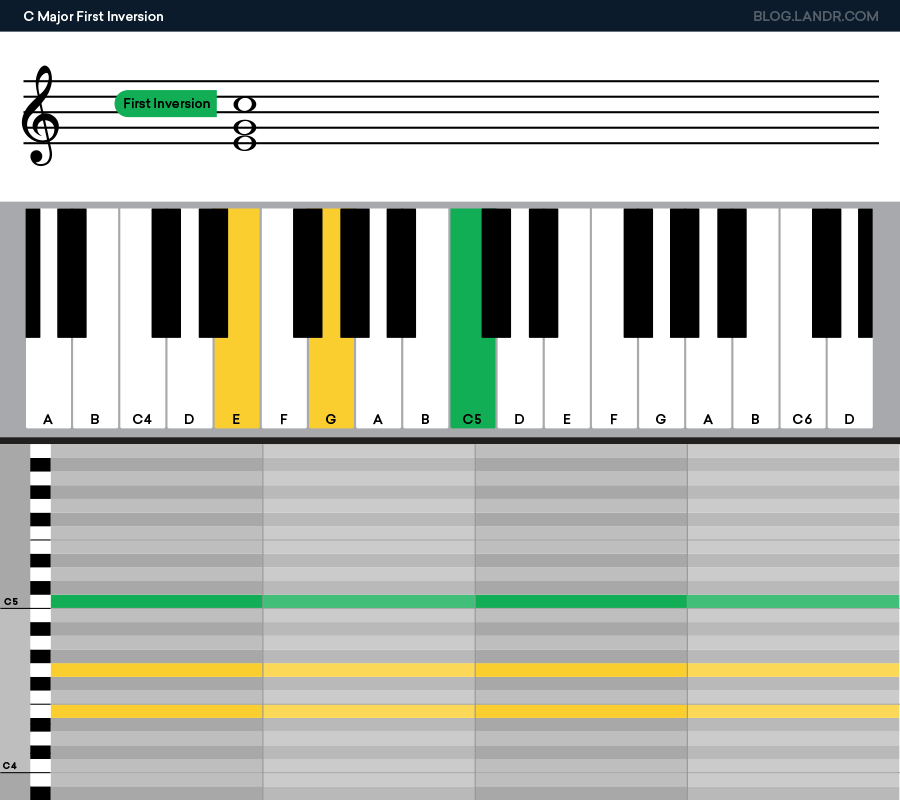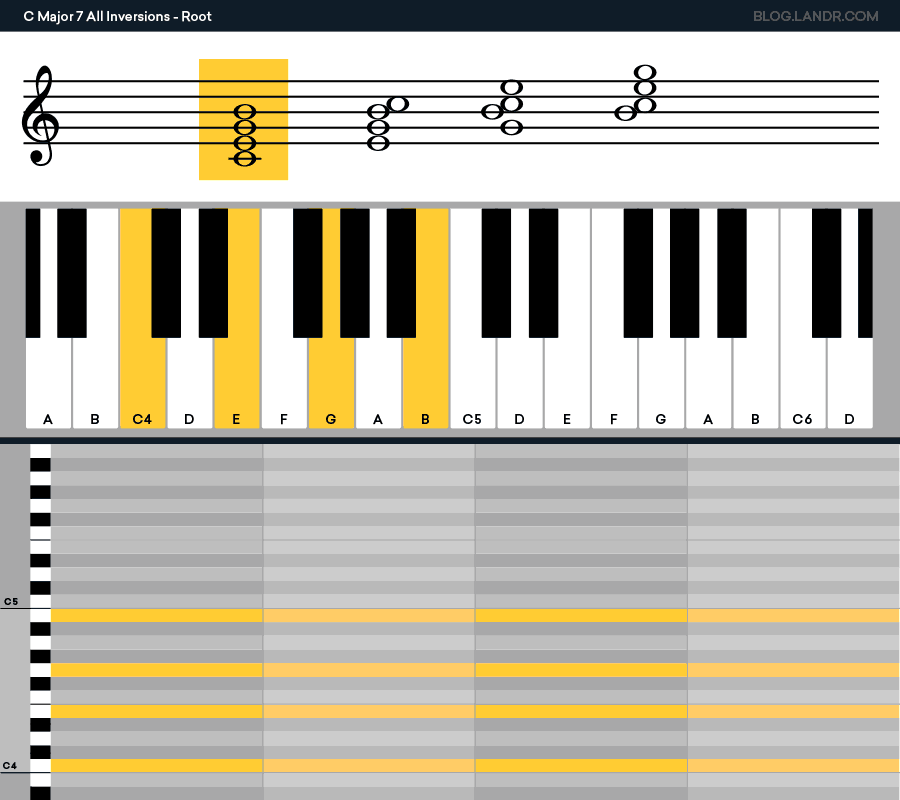Chords are the basic constructing blocks of your songs.
The way you put them together and arrange them into progressions are essential decisions you’ll make whereas writing a song.
Even for those who’re just getting began with music theory, you probably already know a handful of basic chords.
However, in case you’ve ever tried to learn one of your favorite songs note-for-note, you realize that lots of the greatest sounding chords go beyond the essential shapes.
The secret to fascinating chords is a unique chord voicings. They’re the fine details that give each new chord in a progression its own persona.
In this article, I’ll clarify what chord voicings are, how they work, and the best methods to make use of them in your music.
What are chord voicings?
Unique chord voicings refer to the order of the individual voices inside a chord, the color tones added, which chord tones are doubled or omitted and the spacing and octave position of each notice.
Selecting good voicings is a vital facet of music arranging and composition.
Once you write for a group of instruments or perhaps a single harmonic instrument just like the guitar or piano you need to select your voicings to suit the song, association, and playing style of the music.
Chord spelling
Probably the most basic voicing for any chord is named a close root position. That’s when a chord is written as a group of thirds stacked up directly on top of each other.
Here’s a root position C major triad that can assist you to visualize it:
To alter the voicing, you have to rearrange the order of the notes or change their spacing.
To do this, you should keep in mind the names of the notes that make up that chord.
The unique set of notes that identifies a chord is called its spelling.
A chord with the identical spelling has the same letter name and quality, even if the order of notes is jumbled up or separated by octaves.
Practice spelling out various kinds of chords as you play or write that can assist you to get a handle on it.
Spacing
The simplest strategy to change the voicing of a chord is to separate the notes in different octaves.
It’s simple in case you consider a pianist playing notes with their left and right hands.
They may put the root of the chord in a low octave with their left hand, and the other notes in a tight grouping with their right hand.
Or they may spread the notes out evenly, utilizing both hands to distribute the chord tones throughout the octaves.
When the notes are spread out over a number of octaves it’s known as an open position chord.
Open position chords sound slightly more hollow, however, the further distance between notes can give certain intervals a sweet, ringing quality.
Close position sounds blocky and dense but has a more coherent sound because of their tight spacing.
Doubling
Let’s proceed with the pianist instance. A primary triad has solely three notes, however, the piano player has five fingers on each hand.
Meaning they can play more than three notes in the chord as long as they don’t change its spelling.
The pianist can select to double some notes to emphasize the role they play within the chord.
For instance, as an alternative of playing solely the low root note, the pianist could double it an octave up with another finger on their left hand.
Now the chord has an additional stable sound that’s perfect for enhancing the sensation of “home” that comes from resting on tonic harmony.
You’ll be able to double any of the other notes within the triad, just watch out how they work together with the rest of the chords in your progression
Hot tip: You’ll be able to typically omit a fifth of the chord in your voicings. That is possible due to the fifth doesn’t contribute to the chord quality like the root, third, or seventh does. If a voicing sounds too rich or dense, removing the fifth can sometimes help.
Inversions
The following method to enhance your voicings is utilizing chord inversions.
Inversions are chords with the identical spelling arranged in a different order.
In case you need a refresher you possibly can check out our guide to inverted chords for an in-depth look, however, listed below are the basics.
Root position is the essential type of a chord with the root note in the lowest voice.
The first inversion uses a third of the chord within the lowest voice and moves the root up an octave
The second inversion makes use of a fifth of the chord within the lowest voice and moves the other voices to suit.
Seventh chords contain four notes, so they can have a third inversion with the seventh within the lowest voice.
Each inversion has a barely different sound that can play different roles in a composition.
They’re most frequently used to preserve smooth voice leading between chords, however, they will additionally add a unique flavor to any chord voicings in your progression.
Experiment with inversions to see how the different positions have an effect on the basic character of the chord.
Voicings and extensions
So far we’ve talked about triads and seventh chords. Add chord extensions to the combination and your voicing possibilities get even more fascinating.
In case you need a refresher on extended chords, head over to our overview to jog your memory.
Extensions are color tones you possibly can add to a chord to make it richer without altering its total quality.
When it comes to voicings, the 9th, 11th, and 13th intervals you add to your chords are equal to scale degrees 2, 4, and 6.
That gives you many different decisions for voicing prolonged chords. The choices can get fairly complicated, so the best way forward is commonly to depend on your ears.
When a number of extensions are bunched up along with chord tones, they kind highly tense structures called tone clusters.
Even when a chord is tightly compact with close intervals that make it seem dissonant, it could possibly still be a deliberate voicing decision that sounds nice in context.
Voicing concerns
Growing your unique chord voicings is one of the most satisfying methods to be creative with music theory.
However, even for those who persist with the classics, you have to know the basics of chord voicing to make good arrangements in your songs.
Now that you know the way to get began with chord voicings, get back to your DAW, and keep working on your progressions.




